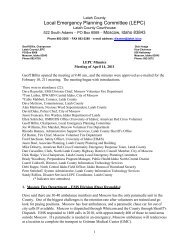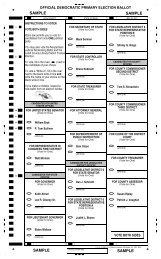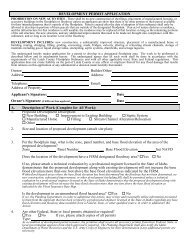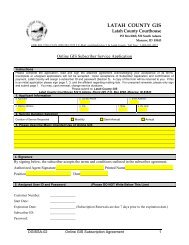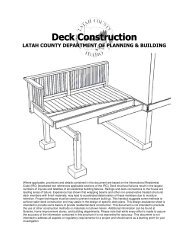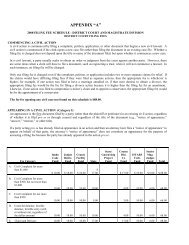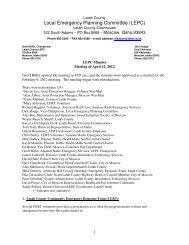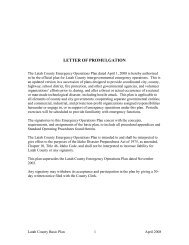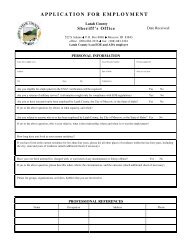LATAH COUNTY, IDAHO MULTI-HAZARD MITIGATION PLAN
LATAH COUNTY, IDAHO MULTI-HAZARD MITIGATION PLAN
LATAH COUNTY, IDAHO MULTI-HAZARD MITIGATION PLAN
Create successful ePaper yourself
Turn your PDF publications into a flip-book with our unique Google optimized e-Paper software.
however, there are a variety of other agencies and organizations that are available to assist during a hazard<br />
event. In most cases, an extended disaster event will require coordination with all of the available<br />
resources. .<br />
The city of Moscow and all its emergency response organizations is dispatched by Whitcom. The remainder<br />
of Latah County is dispatched by the Latah County Sheriff’s Office.<br />
Mutual aid agreements have been made between each of the local fire districts and the Idaho Department<br />
of Lands to supplement resources of a fire agency or district during a time of critical need. Mutual aid is<br />
given only when equipment and resources are available.<br />
Regional Hazard Profile<br />
Data was collected from a variety of sources for developing Latah County’s hazard profile. SHELDUS is a<br />
county‐level hazard data set for the U.S. for 18 different natural hazard event types such thunderstorms,<br />
hurricanes, floods, wildfires, and tornados. For each event, the database includes the beginning date,<br />
location (county and state), property losses, crop losses, injuries, and fatalities that affected each county.<br />
The data were derived from several existing national data sources such as National Climatic Data Center's<br />
monthly Storm Data publications and NGDC's Tsunami Event Database. With the release of SHELDUS 7.0,<br />
the database includes every loss causing and/or deadly event between 1960 through 1975 and from 1995<br />
onward. Between 1976 and 1995, SHELDUS reflects only events that caused at least one fatality or more<br />
than $50,000 in property or crop damages.<br />
Prior to 2001, property and crop losses occurring on the same day within the same geography (i.e. county)<br />
are aggregated by hazard type. For events that covered multiple counties, the dollar losses, deaths, and<br />
injuries were equally divided among the counties (e.g. if 4 counties were affected, then each was given 1/4<br />
of the dollar loss, injuries and deaths). Where dollar loss estimates were provided in ranges (e.g. $50,000 ‐<br />
100,000) ‐ such as in NCDC Storm data until 1995 ‐ the lowest value in the range of the category was used.<br />
This results in the most conservative estimate of losses during the time period of 1960‐1995. Since 1995 all<br />
events that were reported by the National Climatic Data Center (NCDC) with a specific dollar amount<br />
included in the database. 22<br />
It is important to keep in mind that the SHELDUS database does not include every hazard event that<br />
occurred within an area. Only those events that met a specific reporting criterion as explained above are<br />
listed. This means that many local events are not included in this database. Some of the missing events are<br />
considered to be major local hazard events such as the 1996 and 1997 flood events that caused some of the<br />
worst damages in decades and was declared a State Disaster.<br />
22 HVRI. Natural Hazards Losses 1960‐2008 (SHELDUS). Hazards &Vulnerability Research Institute. University of South<br />
Carolina. Columbia, South Carolina. Available online at http://webra.cas.sc.edu/hvri/. February 2010.<br />
34



